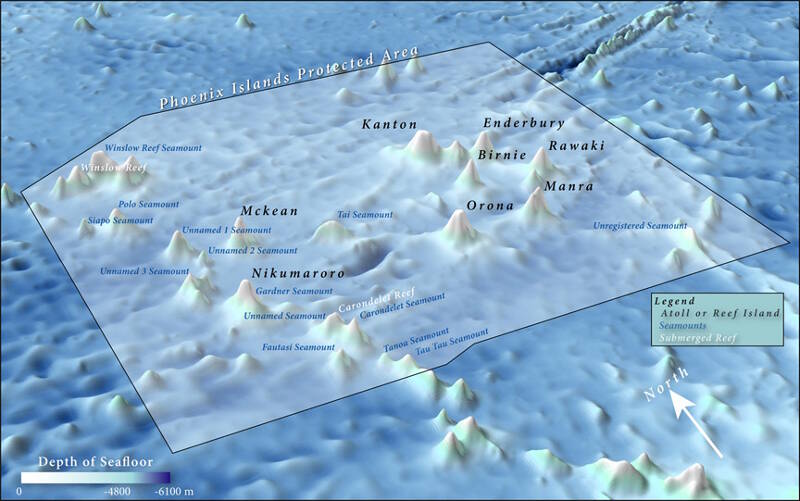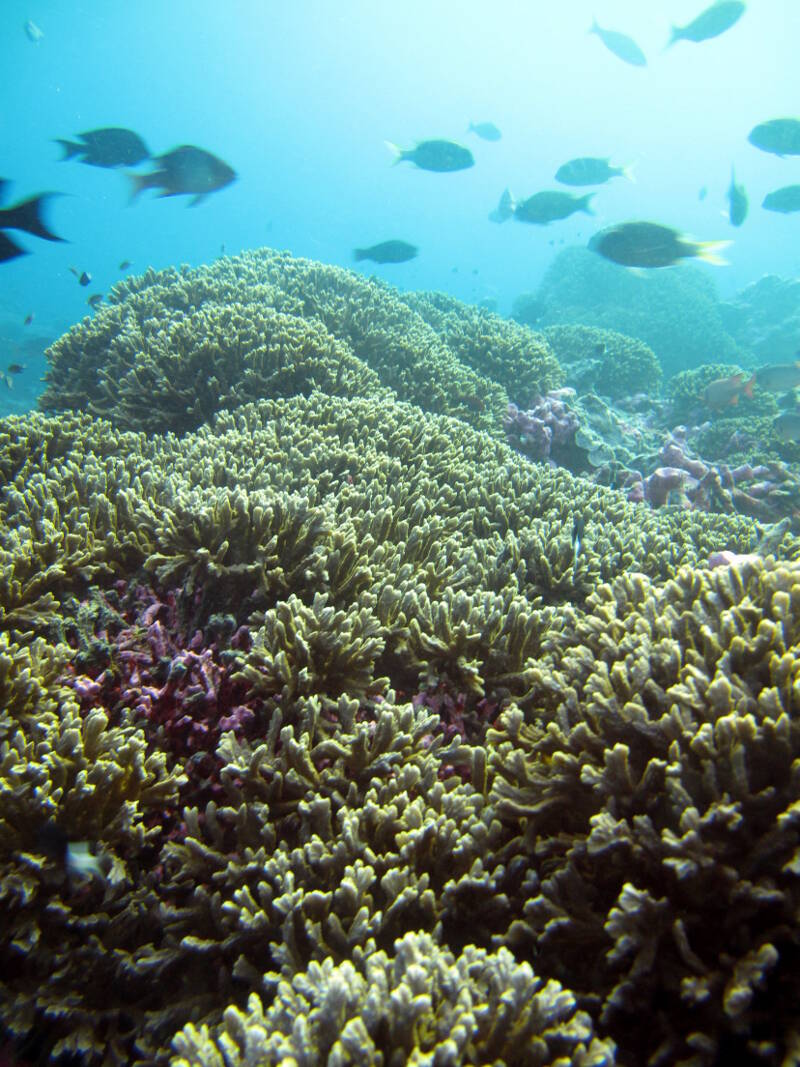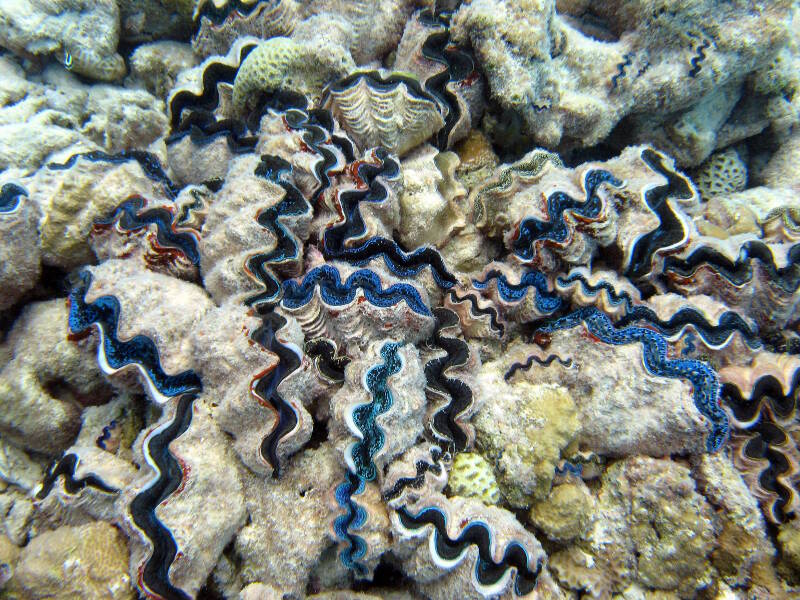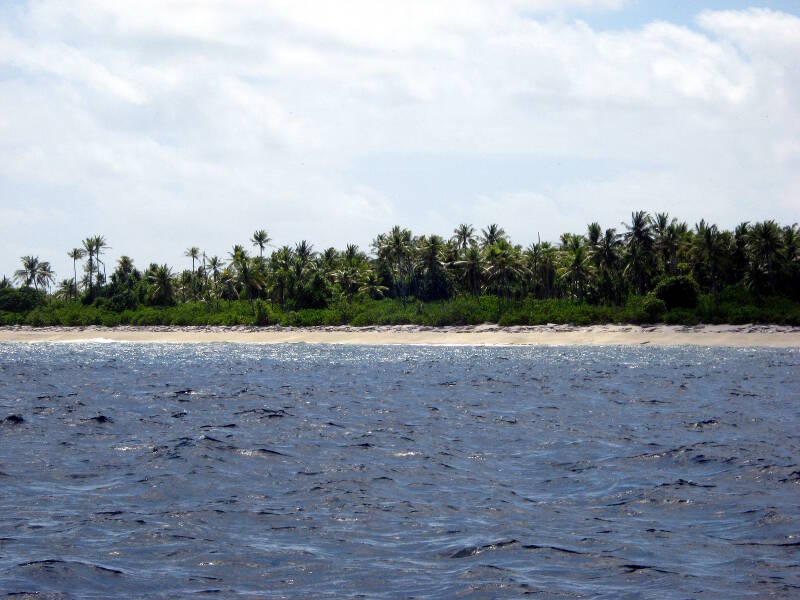
By
Dr. Randi Rotjan, Co-Chair of the Phoenix Islands Protected Area Scientific Advisory Committee - Chief Scientist of the Phoenix Islands Protected Area Conservation Trust, Research Assistant Professor, Boston University
Tukabu Teroroko, Co-Chair of the Phoenix Islands Protected Area Scientific Advisory Committee - Director, Phoenix Islands Protected Area Implementation Office

Bathymetric map detailing the seamounts and submerged reefs located within the Phoenix Islands Protected Area. Image courtesy of Kerry Lagueux / Anderson Cabot Center for Ocean Life, New England Aquarium. Download larger version (jpg, 137 KB).
The Phoenix Islands Protected Area (PIPA) is the largest and deepest UNESCO World Heritage Site on the planet, representing a no-take marine protected area (MPA) of 405,755 square kilometers. Part of the Republic of Kiribati (pronounced Kee-ree-bas), PIPA is a remote and largely uninhabited archipelago that is principally known for its size and innovative conservation strategy.
First created in 2008, it phased in conservation protections in zoned areas until January 1, 2015, when PIPA became fully no-take. In partnership with Conservation International and the New England Aquarium, PIPA created an innovative sustainable financing mechanism, with the creation of a PIPA Conservation Trust and subsequent signing of a conservation contract between the Trust and the Kiribati Government.

Carpets of shallow-water corals use photosynthetic energy to build reefs in the Phoenix Islands Protected Area. Image courtesy of Dr. Randi Rotjan / PIPA / Boston University. Download larger version (jpg, 7.1 MB).
A critical player in the genesis of Pacific marine conservation efforts, PIPA was the first MPA to contain substantial deepwater, pelagic, and seamount habitat, in addition to shallow reefs and critical terrestrial habitat for nesting seabirds. Exploration of this area provides a unique opportunity to determine the impact of a no-take zone in the deep sea.
Although there has been exploration of the shallow benthic (seafloor) reefs and terrestrial habitats since 2000, prior deep exploration was very limited, with a small-scale benthic exploration around Nikumaroro Island conducted by The International Group for Historic Aircraft Recovery (TIGHAR) and an initial bottom profiling expedition from the Sea Education Association (SEA), who has been working on the basic physical, chemical, and biological oceanography in the remote area for the past three years.
NOAA’s Discovering the Deep: Exploring Remote Pacific MPAs expedition will map and use the remotely operated vehicle (ROV) Deep Discoverer to extensively explore PIPA, with a specific focus on exploring seamounts and other interesting benthic features. NOAA’s Office of Ocean Exploration and Research will conduct some initial characterization of the area. Then, the Schmidt Ocean Institute is launching a follow-on mission later in 2017 to continue the work the Okeanos Explorer is starting. These missions will complete the first deepwater biological surveys within the largest and deepest UNESCO World Heritage Site on Earth.
Establishing baseline assessments of deep-sea coral biodiversity and distribution, along with the diversity, frequency, and fidelity of coral-associated communities, are critical to evaluating the impact of the MPAs on deep-sea ecosystems over time. Finally, this is an important opportunity for cross-comparison across neighboring marine protected areas, as part of PIPA’s collaborative arrangement with the Pacific Remote Islands Marine National Monument (PRIMNM), now known as Pacific Islands Heritage Marine National Monument.

Giant clams (Tridacna maxima) symbiotically photosynthesize in the shallow, sun-drenched lagoon of Orona Island, an uninhabited atoll in the Phoenix Islands Protected Area. Image courtesy of Dr. Randi Rotjan / PIPA / Boston University. Download larger version (jpg, 4.6 MB).
Among the features being explored for the first time is a “hadal hole” – an over 6,000-meter deep area of ocean. Such hadal holes are atypical in this part of the ocean, and this cruise will enable much-needed insight into the nature of this benthic anomaly.
Other areas of interest include the Tokelau Ridge seamounts, which extend from north of the Equator near U.S. waters and the islands of Howland and Baker, through the west edge of PIPA traversing several latitudinal degrees, and then south out of Kiribati waters. The Tokelau Ridge is located north of the Tonga-Kermadec ocean trench, and incorporates some of the many Tokelau volcanoes aligned along the ridge. Most of the large, older volcanic structures are greater than 200 meters below the surface and are therefore technically classified as seamounts. These catalogued seamounts include Fautasi, Siapo, Polo, Tai, Tanoa, Tau Tau, Gardner, and four unnamed seamounts.

Uninhabited and fully protected shores of Orona Atoll, in the Phoenix Islands Protected Area. Image courtesy of Dr. Randi Rotjan / PIPA / Boston University. Download larger version (jpg, 3.4 MB).
Winslow Reef is another key area for exploration. Winslow is one of two known, shallow submerged seamounts within PIPA that are the remnants of long-extinct volcanoes along the Tokelau Ridge. First reported in 1851 by Captain Winslow of the whaling ship Phoenix, this seamount is the northern-most and western-most feature within PIPA, is the closest reef to the equator, and is adjacent to U.S. Exclusive Economic zone surrounding Howland and Baker Islands. It is very large, about 140 kilometers in length below the surface, and ranges in depths from 10 – 4,900 meters. Recent shallow explorations of Winslow by Woods Hole Oceanographic Institution, the New England Aquarium, and the Sea Education Association documented a high abundance of grey reef sharks, a healthy benthic coral community, and an abundant fish community at 10 – 15 meters depth at the top of the seamount. However, the seamount extends from barely subsurface to 4,900 meters deep, and the majority of this seamount system remains unexplored. Conservation boundaries in PIPA were recently re-drawn (as of March 1, 2017) to fully include the protection of Winslow Reef within Kiribati borders; deep sea exploration will help to inform conservation management.
This year is a critical time for deep-sea exploration of PIPA. Now almost a decade old, PIPA’s inception has helped to catalyze a series of other very large marine protected areas in a most welcomed “arms race” to protect the ocean. These exploration expeditions will enable first-glimpse insight and knowledge of the ecosystems, habitats, and organisms in the deep waters of PIPA, at a time where the shallow waters have experienced several recent high sea surface temperatures and subsequent coral bleaching events (2002, 2010, and 2015). Whether and how these shallow water stressors have impacted the deep-sea environment cannot be known without a baseline understanding, and repeated visitation, of these deep-sea environments. In time for the 10-year anniversary of PIPA (coming up in 2018), these missions will hopefully inspire the next era of PIPA science and help to provide key information about the relatively unexplored central Pacific region.
McCauley, Douglas J., Paul Woods, Brian Sullivan, Bjorn Bergman, Caroline Jablonicky, Aaron Roan, Michael Hirshfield, Kristina Boerder, and Boris Worm. "Ending hide and seek at sea." Science 351, no. 6278 (2016): 1148-1150.
Rotjan, R.D., R. Jamieson, B. Carr, L. Kaufman, S. Mangubhai, D. Obura, S. Sandin, S. Taei, T. Teroroko, G. Stone, H. Tausig, S. Thorrold, L. Madin, P. Shelley, and T. Toatu. 2014. Establishment, Management, and Maintenance of the Phoenix Islands Protected Area. In: Advances in Marine Biology: Large Marine Managed Areas. M. Johnson, ed. Springer-Verlag vol. 69. Elsevier, Oxford, UK.
Witkin, Reyer, and Savitz. 2016. Global Fishing Watch reveals a fisheries management success in the Phoenix Islands. Oceana Report. 20 pgs.